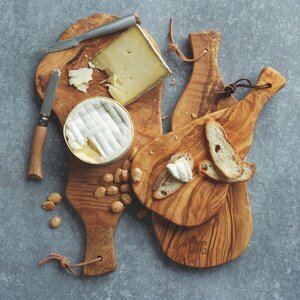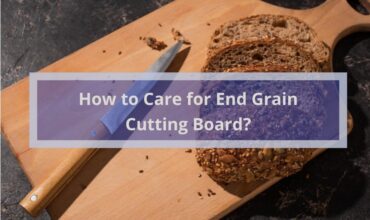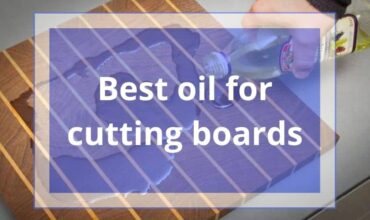You can easily tell whether this is a wood cutting board or a butcher block by determining the type of its grain.
Butcher blocks are usually end grain. Their minimum thickness is 1.5 inches, and their minimum surface area is12 inches x 12 inches. You can also differentiate between them by checking the checkerboard pattern.
Let me sum up the difference for you
Cutting Boards

- Cutting boards are various in materials, shapes, and sizes. They most of the time come in a rectangular shape and are built to fit snuggly over sinks, countertops, cabinets, and shelves.
- Every kitchen should contain at least one cutting board. They are sturdy surfaces that provide excellent support when chopping/cutting.
- Sizes vary, but generally around 12 inches wide & 18 inches long.
- They are usually made from plastic, wood, bamboo, composite, or glass.
- Some elegant models can be used as serving and cheese trays.
- Perfect for slicing and dicing veggies and cooking regular-sized meals.
- Their maintenance and care instructions vary. A plastic cutting board is dishwasher safe, while wood & bamboo cutting boards are not and should only be hand washed.
- They vary in price according to the materials, but all in all, they are not so expensive when compared with butcher blocks.
Read more , Best Butcher Knife Sets
Butcher Blocks
You can say that they are the bulky and oversized cousins of cutting boards. Well, keep that in mind. A butcher block means business. They are huge to handle the heavy-duty carving, cutting, and slicing with no move.
Basically, they are made from wood, you can find them as stand-alone pieces, or you can find them built as part of the countertop.
They are way heavier than cutting boards. It is hard to move them around or store them, so if you plan to buy a butcher block, keep in mind that you have to sacrifice a little bit large space in your kitchen.
Butcher blocks are mainly used in big restaurants and butchers, but if you chop tons of vegetables or prepare lots of meat and food, an excellent butcher block is a good investment. Trust me. It is worth your cents.

Many people believe that butcher blocks are not safe and not sanitary, which is not true. Butcher blocks are so freaking safe and sanitary as long as you maintain them and take good care of them. So we recommend oiling your butcher blocks regularly to keep them hygienic.
They vary in price, but perfect blocks are the expensive ones. So, in brief, we can say that butcher blocks are:
- Bulky, huge cutting surfaces designed for heavy chopping.
- So much thicker than cutting boards, they are a couple of inches thick
- Made from Teak, Maple, Cherry, and Walnut.
- Their regular models can weigh up to 25lbs.
- Relatively expensive in comparing with cutting boards.
- Have to be hand-washed only. They are not dishwasher safe.
- Knife-friendly, they are so easy on your sharp blades and won’t dull them over time.
- Large-surfaced and suitable for master food prep
it is the time to unleash your cooking powers. We wish you a happy cutting experience!
Now you may ask , Best Knives’ Oil and Lubricant Review
Can a cutting board be used as butcher block?
Check also, End Grain vs. Edge Grain Cutting Boards: What is the Difference?
Well, the weight of the board is what actually determines its functionality.
A lightweight board can only be used for dicing and chopping fruits, veggies, and small-sized poultry and meat, while heavier butcher blocks are designed for cutting meat and for deboning and filleting.
Butcher blocks are heavy to not slide while cutting meat, and to keep it safe.
So the answer is that cutting boards can sometimes be used as butcher blocks, but not all the time.
Also read ,





